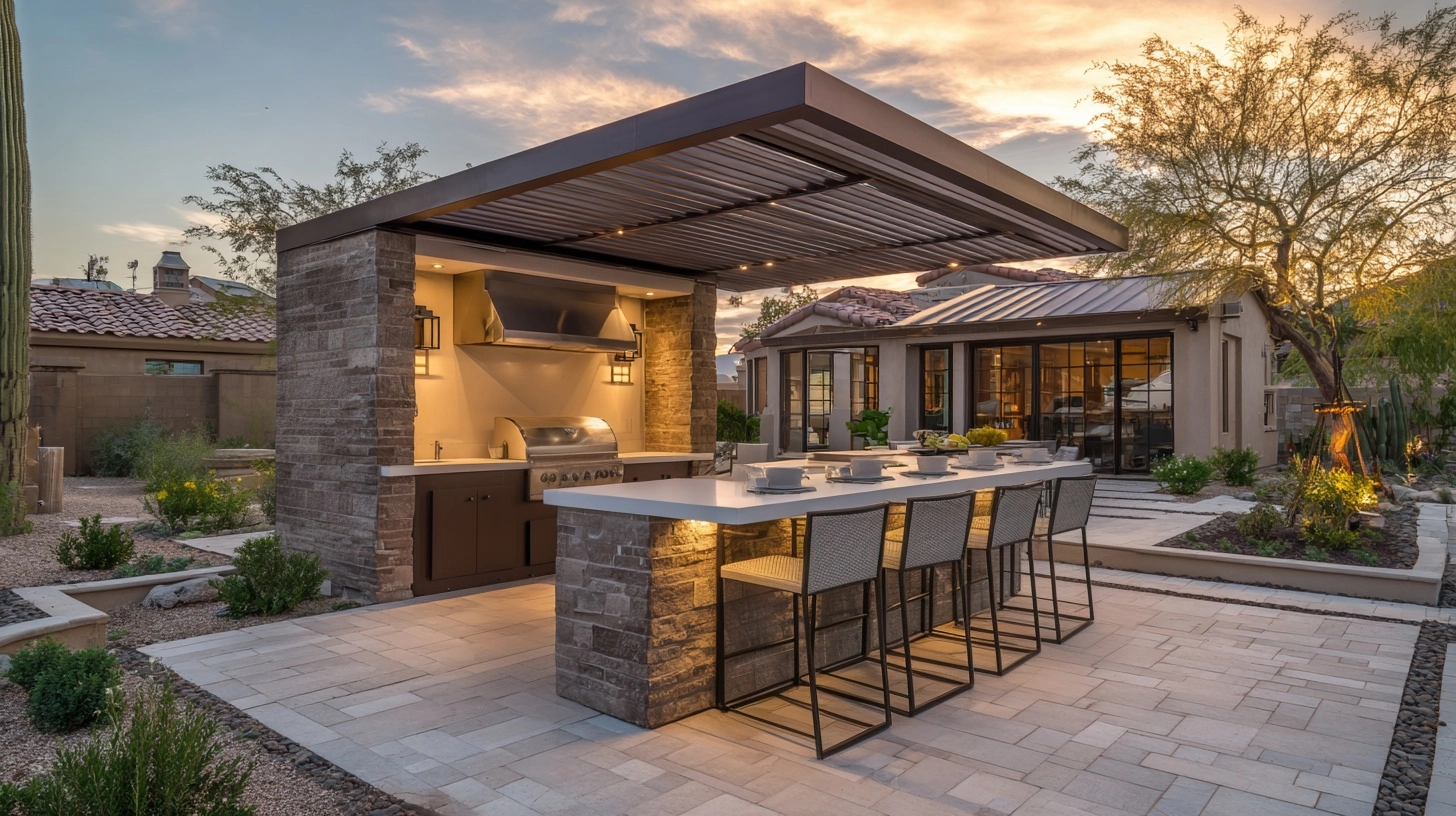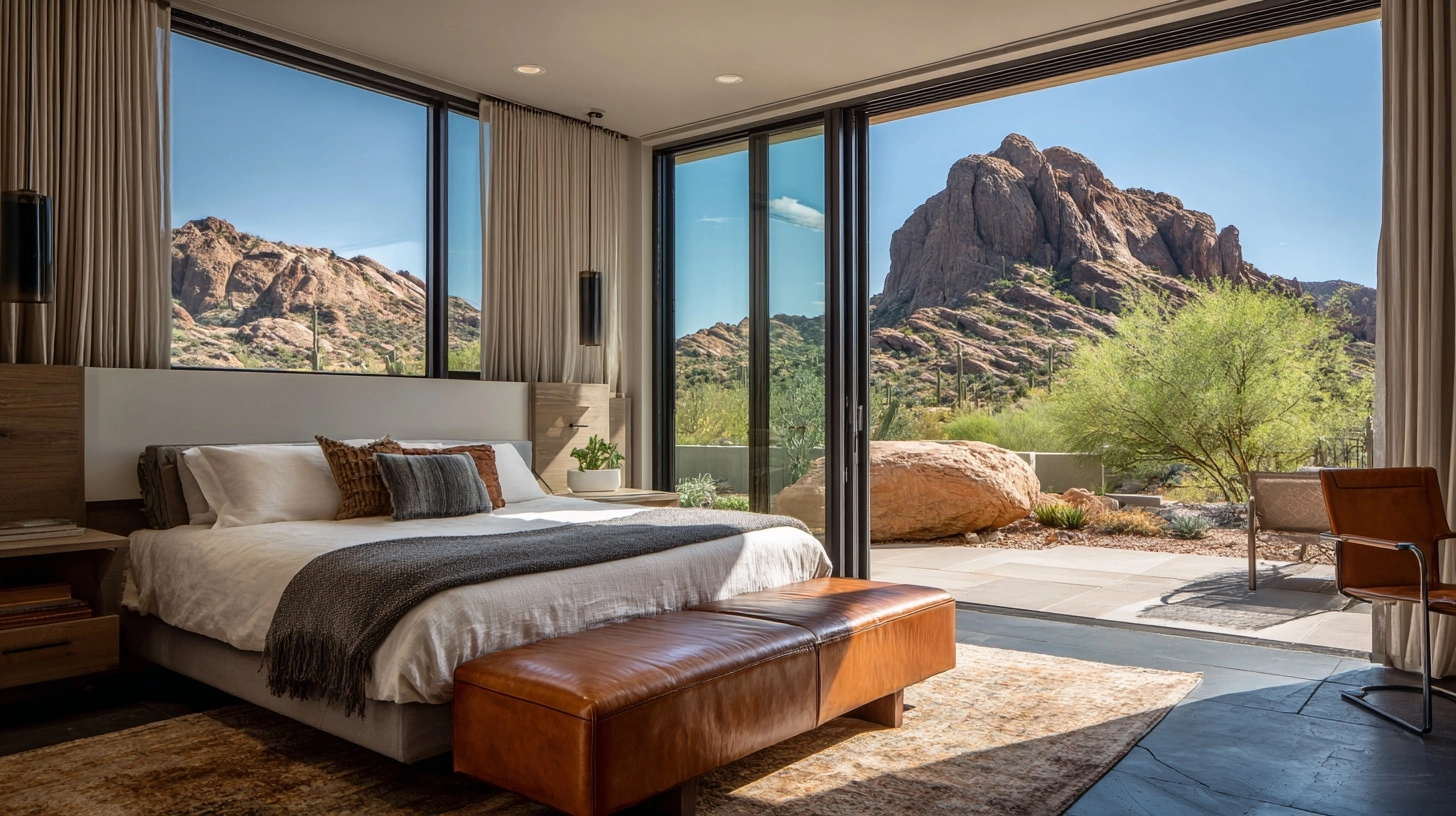
Wet Room Baths: Spa‑Calm Layouts That Actually Work

Outdoor Kitchens: Designs That Work in Phoenix Winters

As the vibrant Arizona sun dips below the horizon, living rooms across the state experience a striking transformation. The character of these spaces is no longer dictated by natural light but by the thoughtful curation of artificial lighting. In the world of high-end interior design, especially in urban-influenced yet welcoming Arizona homes, the true artistry lies in how lighting layers create ambiance, facilitate functionality, and reflect individual style after sunset. Drawing from decades of design and construction expertise, this article illuminates the delicate balance required to craft multi-dimensional lighting schemes that turn ordinary living rooms into captivating nocturnal sanctuaries.
Every successful lighting plan starts with ambient, or general, lighting—the invisible framework that subtly shapes your living room’s perceived volume and comfort. In Arizona homes, characterized by open floorplans and often dramatic ceiling heights, ambient lighting becomes the anchor of nighttime design. Imagine recessed LED can lights strategically positioned to bathe the space in soft, uniform illumination, sidestepping harsh shadows or glare. For spaces with architectural interest, cove lighting tucked behind ceiling cut-outs or within floating shelves adds layered luminosity that elevates without overpowering.
Architectural pendants and refined chandeliers, carefully chosen for both scale and style, reinforce this foundation. In Arizona, the blending of Midwestern pragmatism and Southwestern warmth means that these fixtures serve a dual purpose: to provide broad coverage while making a bold statement. When paired with smart dimmers, ambient lighting transitions seamlessly from vibrant evenings of entertaining to the tranquil calm of intimate family moments. The success of this foundational layer lies in understanding volume—a ceiling that’s too high or a room that’s too wide can leave the space feeling stark or disjointed. Address these challenges by zoning lighting into distinct “pools” or levels, and integrating wall-washing techniques that accentuate architectural features, such as exposed stone or custom millwork.
Where ambient lighting addresses general needs, task lighting sharpens focus, supporting activities that demand clarity and comfort. In living rooms designed for both relaxation and productivity, proper task lighting can completely change how the space is used after dark. Think of sleek, articulating floor lamps paired with reading nooks, or directional sconces mounted at conversational seating areas, each calibrated to minimize eye strain while preserving ambiance.
The choice of bulbs in this layer is critical. Opt for warm, high-CRI LEDs to replicate the inviting character of daylight, crucial in Arizona’s urban communities where the evening often extends social and professional engagements. Controlled individually or grouped on a smart lighting system, task fixtures double as design objects—both functional and beautiful. A Chicago-native’s sensibility for utility means maximizing every square inch: adjustable picture lights may hover over art collections, while underlit floating benches reinforce architectural intent and gently guide foot traffic after sunset.
Personalization underpins every task lighting strategy. A well-designed living room accounts for the habits and hobbies of its occupants. Tech-enabled table lamps with touch dimmers, USB ports, or integrated wireless chargers ensure that even after sunset, the space adapts to evolving needs without compromising cohesion or luxury.
Accent lighting is where the personality of an Arizona living room comes alive after dark. This critical third layer casts intentional highlights, creating pockets of drama or gentle intrigue while guiding the eye toward the room’s signature features. Wall-mounted fixtures, such as directional art lights or uplighting fixtures beneath sculptural plants, transform a static architectural niche or curated gallery wall into a visual focal point.
The magic lies in contrast and intention. Subtle LED tape lights under cabinetry, stair treads, or within built-in shelving introduce a boutique hospitality vibe, blurring the lines between home and luxury retreat. For living rooms with textured surfaces—be it stacked stone, Venetian plaster, or reclaimed wood panels—grazing light reveals depth and tactility, making the walls themselves contributors to the evening’s atmosphere.
Accent lighting doesn’t stop at objects. Exterior window walls, a hallmark of many Arizona residences, can be treated as living art by up-lighting desert landscaping just outside the glass, merging interior with exterior and offering a striking panorama when day fades. The effect: not only are the room’s most cherished elements celebrated, but the sense of intimacy and layered intrigue is elevated, making every evening feel curated and special.
While functionality forms the backbone of lighting design, decorative lighting introduces individual flair—acting as jewelry for the room. In Arizona living rooms balancing contemporary sensibility with regional warmth, fixtures double as objets d’art. Picture geometric pendant clusters over coffee tables, sculptural sconces echoing local artistry, or vintage-inspired table lamps that pay homage to Chicago’s classic urban style.
A high-end design project calls for fixtures that engage, spark conversation, and reinforce the overarching theme of the space. Handblown glass pendants, for example, can cast whimsical patterns while directly referencing Arizona’s desert dusk. Brass, matte black, or aged nickel finishes reflect both city chic and desert hues, ensuring each piece feels integrated rather than secondary. The key to successful decorative lighting is scale—oversized, dramatic pieces anchor expansive layouts, while more delicate fixtures can punctuate and layer smaller areas without clutter.
Selecting statement lighting isn’t just about aesthetics—maintenance and longevity matter just as much. In Arizona’s uniquely challenging climate, consider materials that resist fading and heat, and fixtures that integrate easily into whole-home lighting control systems. This ensures your investment remains timeless in both form and function, uniting every element of the room in a cohesive after-dark narrative.
The true transformation of an Arizona living room after sunset depends on more than fixture selection—it’s about orchestrating these layers in harmony. Lighting control systems, ranging from intuitive wall dimmers to advanced app-enabled platforms (such as Lutron or Control4), empower users to sculpt their environment at the push of a button. Scenes can be programmed for different moods, activities, or times of day, adapting the space as organically as the setting sun outside.
Zoning lights allows for flexibility: a single area may function as a quiet reading enclave one moment and an entertainment hub the next. Automatic sensors, daylight-harvesting features, and voice integration not only enhance convenience and accessibility but drive energy efficiency—an essential consideration in Arizona’s climate.
Moving forward, sustainable and human-centric lighting will define luxury interiors. Incorporating tunable LED technology that adjusts color temperature according to circadian rhythms elevates well-being and sophistication simultaneously. For homeowners and professionals alike, investing in layered lighting, thoughtful integration, and adaptable controls delivers not just striking visual transformation, but enduring comfort and value.
In the end, expertly layered lighting is the secret ingredient that turns every Arizona living room into an evocative masterpiece after sunset—urban yet warm, sophisticated yet soothing, and always reflective of its inhabitants’ personality and needs.
Disclaimer: The content provided in this article is for informational purposes only and is not intended as financial, tax, or investment advice. JL Coates is not a financial advisor, tax consultant, or investment specialist. We recommend consulting with a professional financial advisor, tax specialist, or investment advisor to discuss your specific circumstances before making any financial, tax, or investment decisions based on this information. JL Coates assumes no responsibility for any actions taken based on the information provided in this article.



